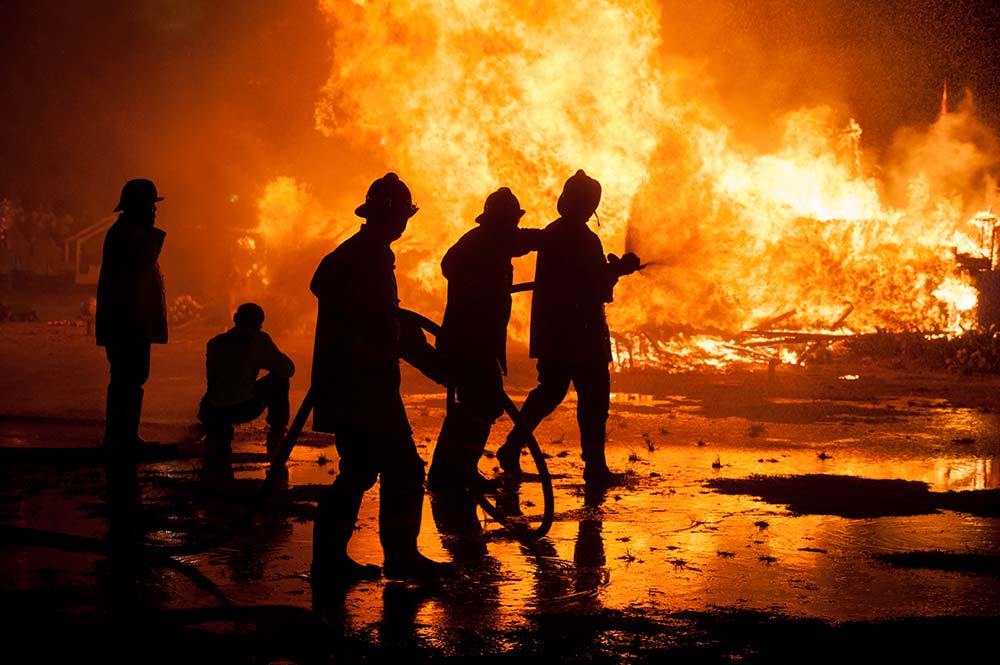
Building a Safer Future: Regulatory Reform on Combustible Cladding
Following publication of the Hackitt Report in May 2018, the government has been under increasing pressure to implement effective reform of building regulations in the UK, with a focus on cladding systems to high-rise developments. Legislation has recently been introduced aimed at improving fire safety and accountability, with a range of further measures anticipated.
Building (Amendment) Regulations 2018
Regulations came into force on 21 December banning the use of combustible materials in external walls of buildings above 18 metres in height, including residential dwellings, boarding schools, student accommodation, registered care homes and hospitals (SI 2018/1230). The new rules also apply where building work is a “material change of use” that brings an existing building within one of these categories. Commercial buildings, including hotels and offices, are excluded.
The ban does not apply retrospectively to existing structures, including where a building notice or initial notice has been given to, or full plans deposited with, a local authority before the legislation commencement date, provided that building work has already started or starts within two months thereafter.
The press release announcing the ban confirms the government’s “full backing” for local authorities to enable them to carry out emergency work on private residential buildings with unsafe cladding, including financial assistance, although local authorities will be expected to recover the costs from building owners. This is not mentioned in the Regulations and seems to indicate support for councils in using their existing powers relating to unsafe buildings, pursuant to the Building Act 1984.
Approved Documents 7 (Materials & Workmanship) and B (Fire Safety)
Regulation 7 of the Building Regulations 2010 requires that materials used in building work are appropriate for the circumstances. A new sub-section 7(2) has been introduced, directing that all materials which become part of an external wall, including “specified attachments” such as balconies and solar panels, achieve European fire safety classification (A2-s1, d0) or (A1), meaning only limited combustibility or non-combustible materials will be permitted. Certain limited components are exempted by regulation 7(3), including gaskets, sealants, windows and any part of a roof.
Approved Document B has been updated to include additional guidance at paragraph 12.6 that insulation products and filler materials used in external walls in buildings of 18 metres or more “should be of limited combustibility or better”. It is no longer permissible therefore to incorporate combustible materials within masonry or concrete walls to new high-rise buildings, such as the Reynobond polyethylene core ACM panels that were used on Grenfell Tower.
Further changes to Approved Document B come into effect on 21 January 2019, clarifying the role of assessments in lieu of testing for cladding and fire safety systems. In accordance with Hackitt recommendations, use of desktop studies should be restricted to appropriate situations backed up with sufficient test evidence, with those undertaking assessments able to demonstrate suitable competence.
The government has launched a wider call for evidence to gather views on (1) more extensive changes to Approved Document B technical requirements, and (2) how residents and landlords can work together to keep their homes and buildings safe. A new Standards Committee is being established to advise on applicable rules, together with a Joint Regulators’ Group to trial proposed legislative changes.
Prescriptive Requirements
The outcomes-based approach to building regulations in the UK puts the onus on companies to operate safely, allowing flexibility and seeking to ensure that emerging risks are addressed without the need for new legislation. However, problems have been highlighted around the lack of clarity in applicable rules, with insufficiently stringent oversight to avoid low standards and damaging conflicts of interest.
Changes to Approved Document B signify a departure from the level of discretion allowed under the previous regime, and moves towards a more prescriptive regulatory framework. The use of combustible materials has not been eliminated entirely though and many commentators believe the proposals do not go far enough. A stricter system of building control applies in some other jurisdictions such as France, Germany and North America, with significantly more emphasis on prescriptive baseline requirements to protect the life safety of building users.
Industry groups are lobbying for the 18 metres requirement to be reduced and the Scottish government has pledged a similar ban for buildings over 11 metres in height, including entertainment and assembly buildings. Related concerns around sprinklers, alarm systems and alternative means of escape in high-rise buildings merit urgent reconsideration as part of integrated reforms.
Future Developments
The second phase of the Grenfell Tower Inquiry is unlikely to start until the end of 2019, according to its chairman Sir Martin Moore-Bick, with some 200,000 documents (including in relation to installation of the cladding and insulation) still to be disclosed. The first phase centred on the night of the incident, and the second will examine wider issues surrounding the fire.
Disputes over remediation of private blocks affected by potentially dangerous cladding materials are ongoing in many cases, exacerbated by complexities in proving clear breaches of applicable building regulations in order to establish liability. Stakeholders in affected properties should consider whether existing insurance, warranties or guarantees can meet the costs of cladding replacement, and seek appropriate advice from policyholder coverage specialists.
Amy Lacey is a partner at Fenchurch Law
Other news
The Fenchurch team reflects on a year in the insurance legal sector
18 December 2025
This year, we were pleased to contribute to Insurance Post’s Claims and Legal Review 2025, with Senior Partner, David…
You may also be interested in:
Archives
Categories
- Fenchurch Law Webinars
- Stonegate
- Newsletter
- Events
- Webinars
- Comparing German and English Insurance Law – A Series
- Construction Risks
- Operations
- Business Development
- Construction & Property Risks
- News
- International Risks
- Legislation
- Financial & Professional Risks
- Case Law
- Professional Risks
- Press Release
- Uncategorized
- The Good, the Bad and the Ugly



